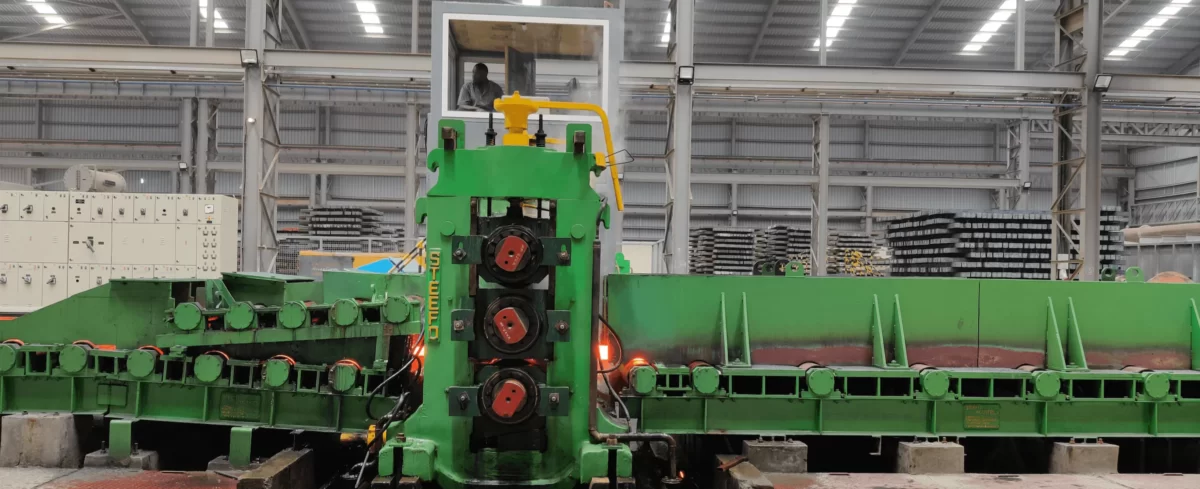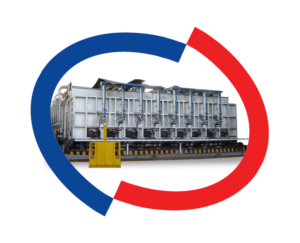The steel industry often earns itself a reputation for being energy-intensive. But with recent developments, there has been an opportunity to transform and walk toward the path of energy efficiency.
In rolling mills, during the production process, intermediate steel products obtain their shape and dimension because of an array of shaping and finishing techniques. To get their shape, slabs are heated to an extreme temperature in the reheating furnace and are then rolled into shape with hot or cold rolling or in finishing mills. Some products specifically require hot rolling, such as reinforcement bars, steel plates, etc. Some products like steel for cars and white goods require both hot and cold rolling.
But the energy needs and costs for both hot and cold rolling can be significantly high. Due to the cold rolling process, the mechanical forces create much more force and increase the energy needed. In the hot rolling process, the execution is faster as it consumes less force, but substantial energy costs are incurred to heat the metal to near eutectic temperatures. Data accumulated from large integrated plants show that the hot strip rolling process is the third-largest energy user apart from iron and steel making.
Reheating furnaces is critical in determining end-product cost and quality in any hot rolling operation. The energy use in a reheating furnace is determined by several production factors such as stock, steel type, etc., and operational factors such as scheduling and design features.
Globally, the total primary energy requirement for hot rolling was reported at 2 – 2.4 GJ/t, and global average energy needs in cold rolling are between 1 – 1.4 GJ/t. (IEA 2007). The way to harvest energy savings could be via upgrading existing furnaces.
Rolling Mills Technology And Measures To Be Energy Efficient
1. Process Control in Hot Strip Mill
To improve indirect energy savings through reduced oxygen rejects, we require improved hot strip mill process control. The main objective is to control and monitor oxygen levels to optimise the combustion rate in the furnace. It also enhances productivity and reduces downtime. We can see results from a system installed at a mill in Belgium, which reduced rejects from 1.5% to 0.2%and decreased downtime from more than 50% of the time to 6%. It also leads to a reduction in CO2 emissions by 15.1kg of CO2/t-rolled steel.
2. Oxygen Level Control and VSDs on Combustion Fans
To optimise combustion in the furnace, controlling oxygen levels and using Variable Speed Drives (VSDs) on combustion air fans on the reheating furnace helps significantly. There is a substantial drop in combustion efficiency with excessive air as it leads to unnecessary waste gases. The fuel to air ratio, therefore, should be monitored regularly. The usage of VSDs on combustion air fans also helps keep the oxygen levels on the reheating furnace under check.
This process has the potential to reduce emissions by 16.6kg CO2/t-rolled steel. It also calculates energy savings to be around 10% or 0.33 GJ/t-rolled steel by a conservative estimate.
3. Pressure Control for Furnace
There are multiple apertures that heating furnaces have, such as extraction ports, raw material charging ports, cracks in the furnace ceiling, and sidewalls. There can be unnecessary heat losses if the pressure in the furnace is too high, causing the heat to be forced out of the furnace.
Due to this, if the internal pressure drops, cold air will be sucked into the furnace, spiking up the fuel consumption. The furnace pressure control technology’s objective is to maintain a constant optimum pressure level to minimise energy consumption. It is primarily applicable in cases of industrial furnaces, including rolling mill reheating furnaces.
4. Regenerative Burners for Reheating Furnace
A regenerative burner is a heat recovery system that recovers the furnace exhaust gas’s waste heat to heat the furnace’s combustion air. Heat reservoirs and dual heat-recovering generators of the regenerative burner are utilised. One side of a burner combusts fuel during combustion while the other accumulates the exhaust heat into the heat-recovering generator.
The burners then switch so that the one collecting the heat combusts the fuel while the other gathers exhaust heat. The usage of regenerative burners for reheating furnaces can deliver significant energy savings. According to NEDO, using regenerative burners on a 110 t/h capacity billet reheating furnace (operating at 1050 oC) can reduce the energy consumption by 0.18 to 0.21 GJ/t-steel in comparison to a conventional furnace. Annual energy savings are reported to be 9.3 to 11.6 GWh. There is a scope of up to 50% NOx reduction in high-temperature combustion. CO2 emissions will also be reduced according to the reduced fuel consumption.
5. Walking Beam Furnace
If you are looking for state-of-the-art efficient reheating furnaces, you will have to look towards a walking beam furnace. In a walking beam furnace, the stock is located on the stationary ridges. The revolving beams walk the product through the furnace till it reaches the exit, where the beam returns to the entrance.
Compared to the three-pusher-styled furnace, installing a walking beam furnace and an efficient control system reduced energy and fuel consumption by 25% and 37.5%. It also provides lower operational costs compared to alternative transmission systems.
Bottom Line
Energy efficiency is a goal that many industries, including the steel industry. Investing into methods reduces exorbitant energy consumption and saves you from facing cost overruns due to lack of optimization. This step toward energy efficiency is also a step toward a better and greener future as many methods cut down on CO2 emissions and improve productivity.

